A Long Lineage – Ancestor Worship
PRIMITIVE - Friday, October 23, 2015By Masaki Imagawa
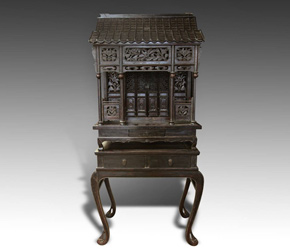 |
|
In the winter of 1966 a young man in Beijing named Yao Li was waging war with his grandmother. It started earlier in the year when Chairman Mao decreed all elements of bourgeois life had to be eliminated as part of the Cultural Revolution. Yao was a member of the Red Guard, an armed youth organization tasked with the removal of the ‘Four Olds’: old customs, culture, habits and ideas. These concepts included religion in all its forms; and when Yao announced to his family that their ancestral altar had to be removed, his tottering grandmother started her own revolution.
“You cannot!” she exclaimed. “Your grandfather’s spirit lives there. Have you forgotten he saved your life? When you were ten years old, you nearly drowned!”
“I have not forgotten!” Yao retorted. “But worshiping the dead threatens the revolution.”
“What threat is there in giving respect and offerings?” asked his grandmother vehemently. “Where’s your sense of family and honor?”
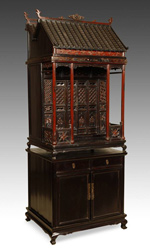 |
|
Yao fell silent. He could not find anything to say in response; however, his sense of duty to the Red Guard ultimately won over and he returned later with his peers to confiscate the altar. When he arrived, he found neither his grandmother nor the spirit tablets inscribed with the names of his ancestors. Yao searched the house in the following days and even questioned his grandmother, but the old woman always said the same thing. Each time he broached the subject of the missing tablets, she would say, “Please be silent; I’m concentrating on the Chairman’s wise words.” She would then pull a Little Red Book from her apron with complete innocence on her wrinkled face. This exchange repeated itself until the next bi-monthly day designated for ancestor offerings. Yao finally caught his grandmother kneeling on the floor where the altar used to stand, lining the spirit tablets in their correct hierarchical order and placing foods, drinks, and spirit money in front of them.
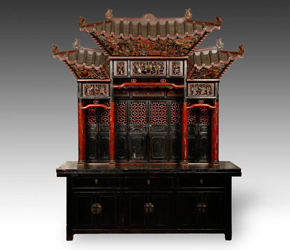 |
|
Yao’s grandmother locked eyes with him and with complete resolve she said, “Report me if you want. Perhaps I’ll be sent to a labor camp, but I will not stop fulfilling my duty to our ancestors.” Yao finally acknowledged that he could not bring himself to report his grandmother. He loved her, but more than anything else, deep down he shared her beliefs. Habits established during his upbringing were not so easy to shed. Yao bowed his head and quietly knelt beside his grandmother. He thanked his grandfather for saving his life and asked his forgiveness for taking away the shrine. Then he whispered to his grandmother, “Keep the tablets well hidden. I must never see them again for both our sakes.” Such was the power of the Cultural Revolution.
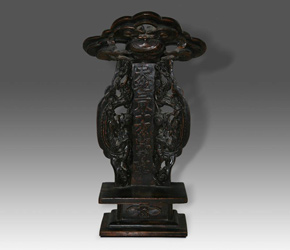 |
|
Yao Li wasn’t the only one who turned a blind eye to ancestor veneration during China’s Cultural Revolution. Even as people dutifully carried their ‘Little Red Books’ and wore badges bearing their leader Mao’s profile, they continued to pay respect to their ancestors in defiance of new cultural norms and directives. After all, ancestor worship dated back thousands of years. It was an integral part of Confucianism, Taoism, Buddhism and many other folk religions. In China, it was widely believed that upon a person’s death part of their soul rose to heaven while another stayed on earth to reside in their spirit tablet. Living descendants would give offerings at the altar to their ancestors and protect their graves. In turn, their ancestors would influence the gods to bring their family good fortune, health, wellness and prosperity. Traditionally, the Chinese family unit included the living and the deceased with ancestor worship being the cornerstone of familial unity and solidarity. Although the Cultural Revolution could destroy tangible objects like altars and tablets, it could not eradicate the belief responsible for their creation.
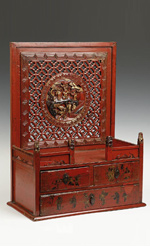 |
|
In China, the altar held special importance within a household. It could be viewed as the residence of ancestral spirits. In larger estates, a whole hall might be dedicated to ancestors with the altar located in a place of honor. Altars varied in style from classic altar tables to cabinets, and even to those that looked like homes themselves, architecturally correct in every way. This was deliberate as many altars were crafted to resemble clan estates so spirits would feel comfortable in their own homes. Some altars were decorated with intricate carvings of mythical animals and birds, wise Confucian masters, and auspicious characters and symbols. Although many of these architectural altars were confiscated during the Cultural Revolution, those that survived illustrate an undeniable level of craftsmanship. It is simply amazing to think of the many generations of prayer and care witnessed by these altars. It gives them a sacred patina.
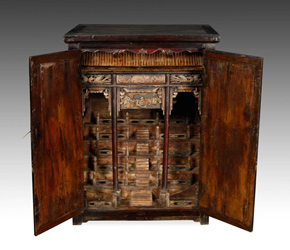 |
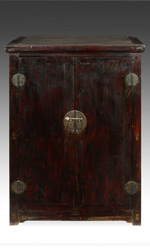 |
||
The worshiping of one’s ancestors was a common custom throughout Asia. Traditional households in Japan often contained altars dedicated to ancestors; and although many families don’t have space for altars today, they still celebrate Bon, an annual festival dedicated to welcoming family spirits home for several days in the summer. In Korea, Jesa is a ritual memorial service held to honor a family’s ancestors. It is performed with offerings and festivities. In Vietnam, the death anniversaries of ancestors are traditionally recognized and considered more important than their birthdays! Just like China, many Vietnamese worship their ancestors and have altars in their homes regardless of any religion they may practice. In other words, ancestor worship is as much a social as a religious phenomenon.
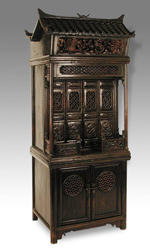 |
|
Some may think ancestor worship and family altars are exclusively Eastern traditions, but that’s not exactly correct. Have you ever placed family photographs on top of a cabinet, tabletop, in a bookcase or gathered them together on a wall? Were any of these photographs dedicated to deceased family members; grandparents, great grandparents, brothers, sisters, aunts or uncles? Would you call such an assemblage an ancestor altar? Many people would; and if you did place such photographs together, how did you feel when you examined them? Ancestor worship may sound ritualistic and religious from afar, but isn’t it the recognition of family ties more than anything else. Recognizing these ties often brings relatives together to gather and talk about times they shared with their family. Whether in the East, West or anywhere else, the sentiment expressed by ancestor worship is essentially the same for us all. No matter how it is expressed, in quiet reflection at the foot of an altar, at a festival or ceremony, or simply through the examination of photographs and paintings, it results in actions that reinforce family ties, love, and appreciation. Whether performed by older or younger generations, intermittently or frequently, individually or in a group, or in the expectation of receiving some benefit or reward such as health, wealth or protection, ancestor worship is a means to stay connected, and some might even argue, to tap into the collective wisdom of those who have come before. It’s something I think our ancestors might appreciate; do you?
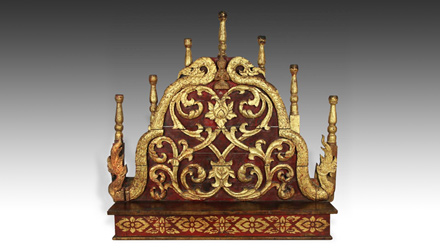 |